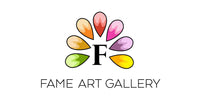Edward Hicks
Edward Hicks- A Quaker Artist of American roots
Introduction
Born in an Anglican family, Edward Hicks went on to become a renowned painter who mastered the art of depicting folklife and the American farm landscape. What many would think of rustic and unimportant was the seed of beauty and imagination for Hicks. He is known for his work with the subject of the Peaceable Kingdom from Isaiah’s prophecy. His most known depictions of Peaceable Kingdom relate to his belief as a Quaker. His paintings made him a renowned Quaker icon as well as a well-known name in the American painting circle.
Early Life
Edward Hicks took birth on April 4, 1780, in a mansion in Attleboro, Bucks County, Pennsylvania. He was orphaned at the age of mere eighteen months and was adopted by Matron Elizabeth Twining. His early years were spent at the Twining Farm. Many believe that his upbringing at the farm with Quaker beliefs shaped his life and his career as a painter.
His interest in farm landscapes may have come from his childhood experiences. At 13 years of age, Hicks started an apprenticeship in coach painting. By the early 1800s, he had begun earning independently as a coach and house painter. His actual painting career started out later, after his marriage.
Famous Artwork
Hicks’ most famous artworks are probably the depictions of Peaceable Kingdom. The first of his series of Peaceable Kingdom paintings were painted in 1820. Hicks has painted nearly 62 versions of the Peaceable Kingdom. Hicks believed in a set of principles called the Inner Light which influenced his paintings greatly.
The Peaceable Kingdom of the Branch came into existence in the late 1820s, somewhere around 1826. Most of his other works came around the 1840s. For example, Washington at the Delaware was painted in 1849. The Residence of David Twining and Noah’s Ark was painted by Hicks in the mid-1840s.
Final years and Death
Washington at Delaware was one of the last paintings created by Hicks as he died on August 23, 1849. He died at Newtown, Pennsylvania, and remained a Quaker Artist till Death. His funeral had the most people in attendance in his county because of his popularity in the community.


